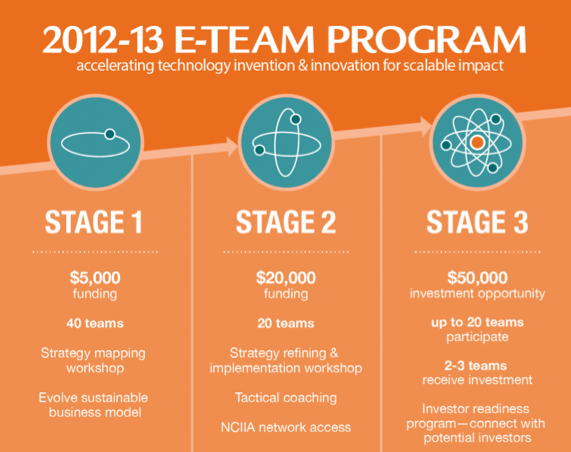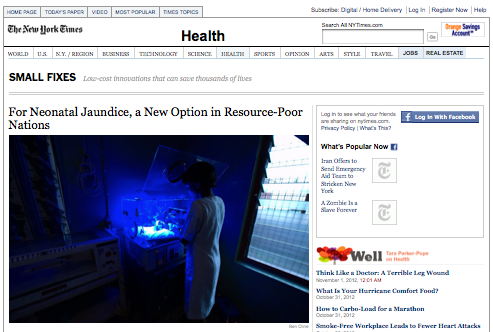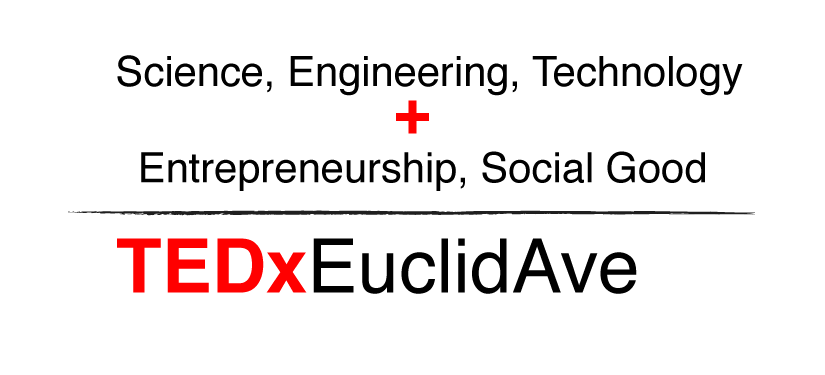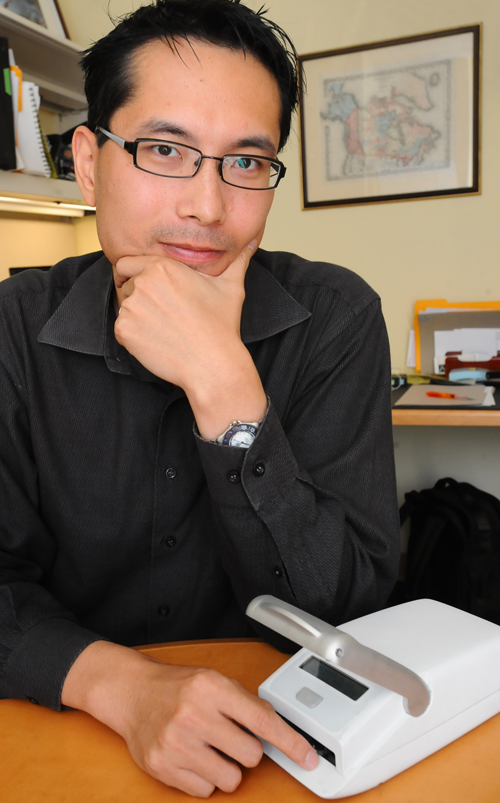Brilliant Student Innovations Address Global Challenges
The NCIIA grants program is one that has given rise to numerous student-led companies. Actually, given that NCIIA has been around for 17 years, many are ‘all grown up’ and employ hundreds of people, garnering millions in economic impact…. but I want to highlight the ones that one might classify as ‘International Development’. If you’re from a campus that has a well-developed programs to help students explore opportunities for ‘social venturing’, you are lucky. Look into it. For those that do not, students should know that philanthropies, corporations and venture capitalists are investing in for-profit business models to serve the bottom-of-the-economic-pyramid customer base. Socially focused enterprises are thought to effectively address poverty through affordable services and products, including health care, sanitation, clean water, and energy, to those most in need. The NCIIA encourages students to apply for grant funding and create new ventures that benefit society, including ‘bottom-of-pyramid’ customers for whom socially beneficial products, like neonatal technologies, can be a game-changer.
not, students should know that philanthropies, corporations and venture capitalists are investing in for-profit business models to serve the bottom-of-the-economic-pyramid customer base. Socially focused enterprises are thought to effectively address poverty through affordable services and products, including health care, sanitation, clean water, and energy, to those most in need. The NCIIA encourages students to apply for grant funding and create new ventures that benefit society, including ‘bottom-of-pyramid’ customers for whom socially beneficial products, like neonatal technologies, can be a game-changer.
I watched this video today and it hit home personally. Liya’s Diary, produced as part of the Bill and Melinda Gates ‘Living Proof Project’ video series outlines the persistent global challenges of maternal and neonatal health.  My father grew up in a rural village in India. Although I was very young, I can remember visiting the poor dwelling where he and his 15 siblings lived. As a woman who has given birth to three children in the last 10 years, one who was born with severe jaundice, the notion that 600,000 deaths still occur annually due to jaundice illicits a personal and emotional response. Ben Cline is a student from Stanford that helped form Brilliance, a company that makes phototherapy devices for the developing world. We first met Ben in 2009 at NCIIA’s venture-development workshop which he had to leave early to catch a flight to India, to develop the innovation further and investigate the best means to bring it to market. We’re pleased to report that in three short years, the phototherapy device is hitting the market at a price point of $400 (see NYT article below).
My father grew up in a rural village in India. Although I was very young, I can remember visiting the poor dwelling where he and his 15 siblings lived. As a woman who has given birth to three children in the last 10 years, one who was born with severe jaundice, the notion that 600,000 deaths still occur annually due to jaundice illicits a personal and emotional response. Ben Cline is a student from Stanford that helped form Brilliance, a company that makes phototherapy devices for the developing world. We first met Ben in 2009 at NCIIA’s venture-development workshop which he had to leave early to catch a flight to India, to develop the innovation further and investigate the best means to bring it to market. We’re pleased to report that in three short years, the phototherapy device is hitting the market at a price point of $400 (see NYT article below).
 What separates this success from other student-led projects that aim to have the same level of meaningful impact? Well, there are many but in my mind it was the early partnership with D-Rev, a Bay Area-based non-profit that has years of experience commercializing technologies for the developing world. For any given technology, market sector or innovation, the partner might be different but the importance of forging a strong commercial tie to an organization that has the experience, network and financial resources to move accurately and expeditiously towards appropriate commercial track is one of the biggest challenges for student ventures.
What separates this success from other student-led projects that aim to have the same level of meaningful impact? Well, there are many but in my mind it was the early partnership with D-Rev, a Bay Area-based non-profit that has years of experience commercializing technologies for the developing world. For any given technology, market sector or innovation, the partner might be different but the importance of forging a strong commercial tie to an organization that has the experience, network and financial resources to move accurately and expeditiously towards appropriate commercial track is one of the biggest challenges for student ventures.  Watch the TEDx talk (right) delivered by D-Rev’s, CEO Krista Donaldson, and the value of such a partnership is readily evident.
Watch the TEDx talk (right) delivered by D-Rev’s, CEO Krista Donaldson, and the value of such a partnership is readily evident.
Last June National Collegiate Inventors and Innovators Alliance (NCIIA) convened the Neonatal Technologies Forum with support from The Lemelson Foundation. According to the report from the meeting released by NCIIA last September, University-based innovation teams’ technology development and dissemination work is taking place in the context of a larger international development and global health push to improve maternal and child health. Millennium Development Goals (MDGs) four and five call for reductions in child and maternal mortality by 2015. The UN’s 2010 Global Strategy for Women’s and Children’s Health calls for new interventions, including new technologies, as key components of an integrated global strategy to achieve the MDGs. Other aspects of the strategy include health systems strengthening, integration of care, support of country health plans, and ensuring access to comprehensive care interventions and services. Students searching for a meaningful way to do well in life and do good should consider ways to be part of the solution.
– Humera Fasihuddin, Program Manager, NCIIA
(On twitter @ihumera)





